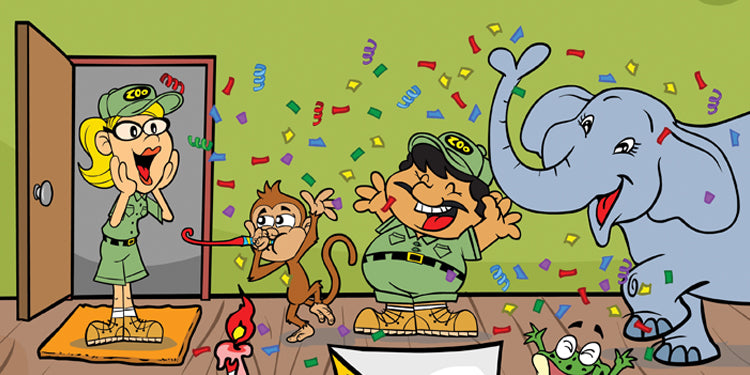 This is a guest blog post by Dana Lester, who writes a blog called
Common to the Core
, in which she writes about the Common Core State Standards, student reading skills, behavior management, books and products, and more. Dana is writing a series of guest posts;
to see her other contributions, you can click here!
This is a guest blog post by Dana Lester, who writes a blog called
Common to the Core
, in which she writes about the Common Core State Standards, student reading skills, behavior management, books and products, and more. Dana is writing a series of guest posts;
to see her other contributions, you can click here!
Punctuation’s Important!
Hi! This is Dana from Common to the Core . Today, I want to talk for a few minutes about punctuation. When we think about fluency, the first thing that usually comes to mind is speed or maybe accuracy. Expression is usually an afterthought, but it is just as important. You’re wondering what fluency has to do with punctuation, right? Well, punctuation drives expression. Our inflection is decided by the punctuation of each sentence. Consider the difference in these two sentences:
1. Let’s eat Grandma.
2. Let’s eat, Grandma.
Sentence 1 always makes me giggle! L eaving out the comma not only changes our tone, but the meaning as well. We have to teach our young readers this!
After teaching your students the basic punctuation marks (period, comma, question mark, and exclamation point), bring attention to them in the context of text. Using a big book or morning message, let students highlight the punctuation marks with highlighter tape. Place a sheet protector over a page in a book and circle punctuation marks with a dry erase marker.
A favorite way of mine to bring attention to punctuation marks is with sound effects. First, students make up a sound and motion for each mark. Then, during oral language activities, or anytime the child speaks out in the class, they must use the sound and motion at the end of the sentence. For example, with my first graders, the sound for a period was of tires screeching on the road. The gesture was to put your hand out and down like you were pushing an imaginary brake pedal. When students made a statement it would go like this, “I like to play on the monkey bars EEERRKK” and hand would press that imaginary brake pedal. They loved it!
The Zoozoo Storytellers books by Alan Trussell-Cullen are great for practicing intonation. These books have nice short sentences full of sight words that even your most struggling readers should recognize. Students can easily look ahead to the punctuation mark at the end of these short sentences and practice using the correct tone and voice inflection. Take a look at the punctuation in the flipbook below:
A method for practicing punctuation mark fluency is to write down the alphabet and insert the marks you want to practice. It looks something like this:
Abc? Defg. Hi? Jklm, n, o,p. qrs? Tuv. Wx! Yz!
Go ahead, read that aloud, it’s fun!
Please share with us any activities you use to practice punctuation fluency in the comment section below!
Thanks!
~~~
Dana Lester received a B.S. and Master’s Degree from Middle Tennessee State University and is currently teaching at Walter Hill School in Murfreesboro, TN. Dana is also a Common Core Coach with the Tennessee State Department of Education. She has 12 years of classroom experience and has just begun her role as Library Media Specialist. As a strong advocate of the Common Core Standards and Whole Brain Teaching strategies, she engages her students in hands-on, inquiry based learning and shares many ideas and activities on her blog, Common to the Core . She was named Teacher of the Year at Walter Hill in 2013.
~~~
To learn more about Zoozoo Storytellers, you can click here to visit our website , or click the series highlights image below to download an information sheet with key features.













































![6 Fun and Easy Activities to Practice Sequencing [Grades K-1]](http://www.hameraypublishing.com/cdn/shop/articles/Red_Typographic_Announcement_Twitter_Post-5_bf1ae163-a998-4503-aa03-555b038d1b76_600x.png?v=1689961568)
![Leveraging Prior Knowledge Before Writing and Reading Practice [Grades 1–2]](http://www.hameraypublishing.com/cdn/shop/articles/Red_Typographic_Announcement_Twitter_Post-4_600x.png?v=1689961965)




